Description of the species of predatory aquarium fish and their content
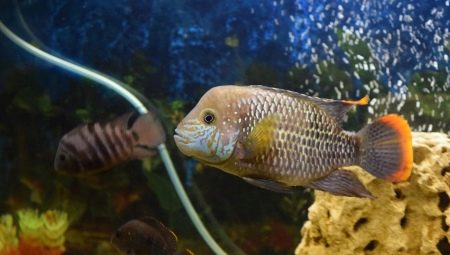
Any novice aquarist asks the question of who to settle in his artificial reservoir. Maybe it will be little guppies with their veiled bright tails? Or fancy big-eyed telescopes? Or maybe you should turn your gaze towards the predators? After all, they are no less, and sometimes even more interesting than the peaceful “vegetarians”. This is just about aquarium predatory fish and will be discussed today in our article.
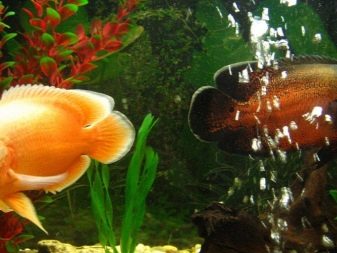
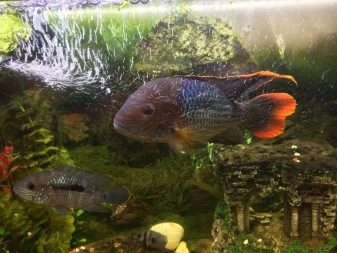
Peculiarities
The content of predator fish is not at all as simple as it might seem at first glance - it has a number of characteristic features.
- First of all, you must understand that not all fish will rush to a piece of meat with pleasure - some of them are fundamentally important about hunting, that is, live game. Can you provide such a fish with a complete diet?
- Further, due to the specifics of the food, the water in the aquarium, where the "livestock" live, becomes polluted very quickly, which means that you will have to change it and clean the container more often.
- Predators, as a rule, are large fish, respectively, and they need a lot of living space. You will have to set aside enough space in a lighted corner of the room to place an aquarium there, equip it with purification and air systems, as well as other special equipment, and this can cost you a tidy sum.
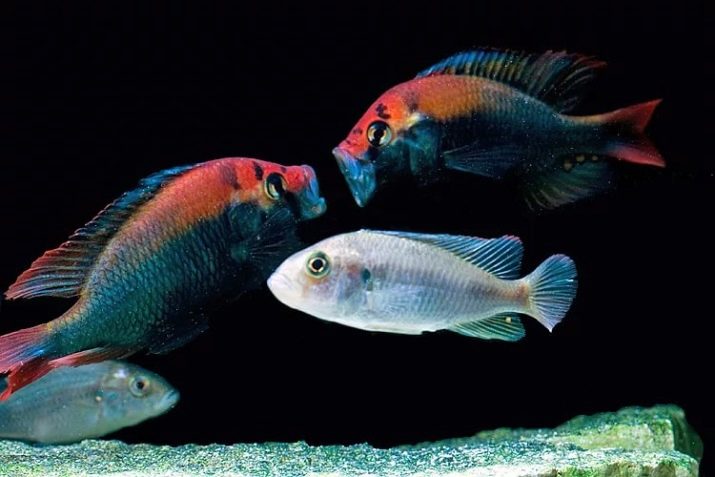
Varieties
Let's take a closer look at the description of the varieties of aquarium predators. Perhaps, at the end of this "acquaintance" you decide to purchase one or more of them.
Anabas, or crawler
The second name was given for the fact that in the wild, it often jumps out of the water and sits on trees (by the way, no one knows why they do it).That is why it is worth covering the aquarium with pineapples so that they do not creep around the apartment. As for the diet, the creeper will happily feast on small fish, fry, or boiled rice grains.
Pineapples prefer to live in a flock of 4–5 representatives. The volume of the aquarium is preferable from 150-200 liters.
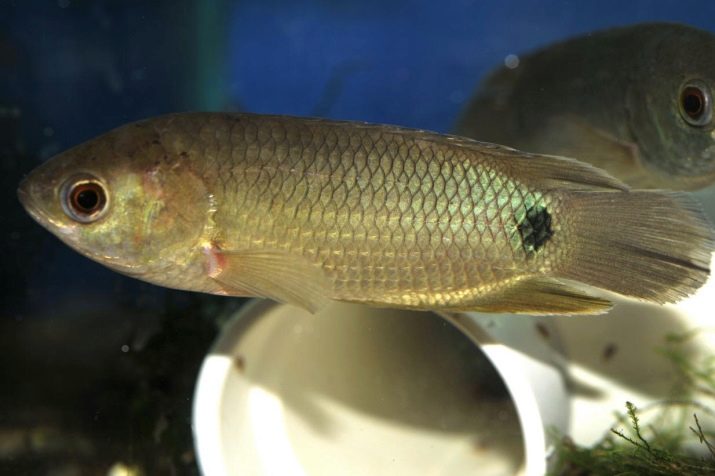
Apteronotus white-lime
Large (about 30–35 cm) and rather vicious fish that does not tolerate competition. Apteronotus jealously guards its territory, so if you decide to settle it at your place, keep in mind that you will have to buy an aquarium at the rate of 200 liters per fish.
Apteronotus is a born hunter, he will happily chase and eat any live bait, be it a fish, freshwater shrimp or crustacean.
Squid meat, cut into small pieces, is also suitable as feed.
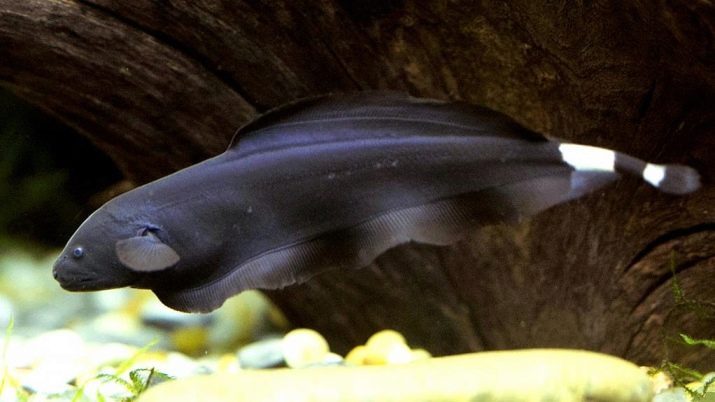
Belonesox
Interesting in that it belongs to the viviparous species.
This fish is so aggressive that it is capable of killing a partner during courtship (this behavior is inherent in females). At the same time, he treats larger fish indifferently and does not try to eat them.
Belonesox feed on small fish, fry, and sometimes tadpoles.
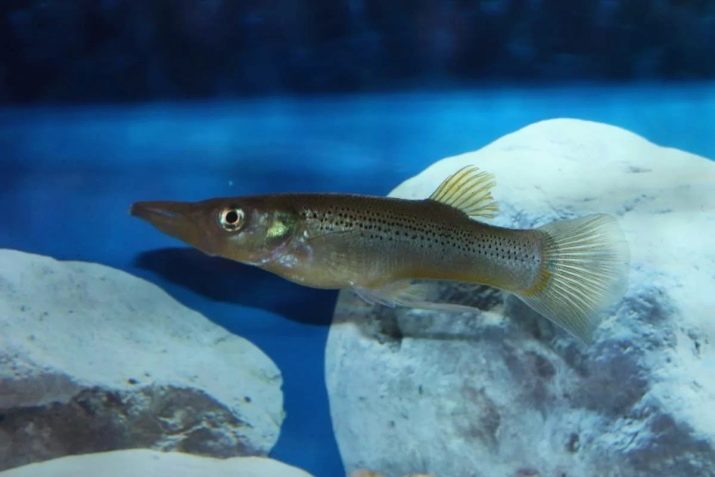
Diamond perch
A predatory fish that does not differ in its heroic size (it grows on average up to 5–6 cm), as a result of which it will not be able to harm its larger "neighbors", but this fish is a meat-eater. To feed it, you have to boil the beef or pamper the perch with small freshwater fish.
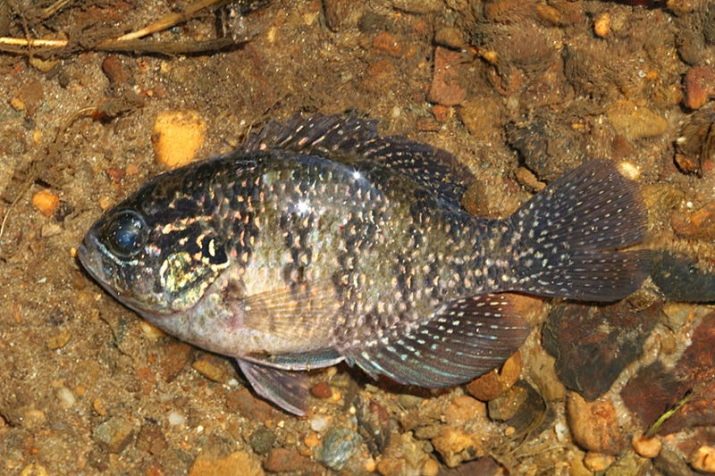
Kalamoicht calabar, or snake fish
At first glance, it may seem like a timid and shy pet, because during the day the "snake" hides, and goes fishing at night. However, it is precisely this way of life that helps the kalamoicht to survive - sometimes fish become its prey, much larger than it.
In the wild, it is able to "grow" a full meter in length, but the aquarium content reduces its growth to 35–40 cm.
It is better to keep Kalamoichts without extraneous neighbors because of their aggressiveness. It is important to equip grottoes, caves and stone slides at the bottom so that they can hide there during the day.
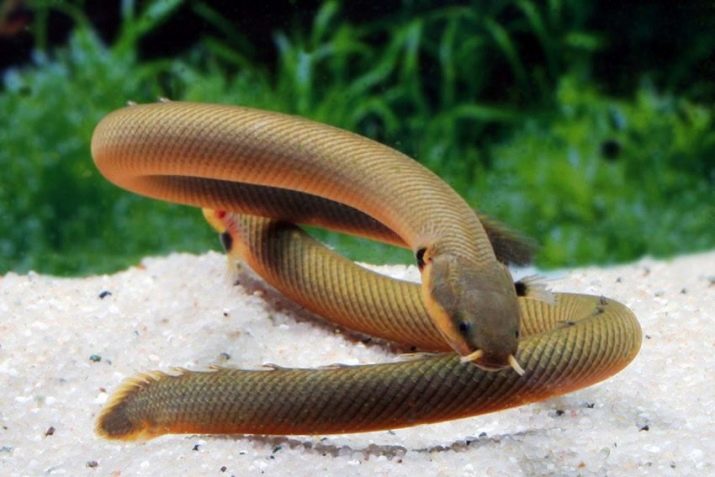
Red piranha
World famous predatory fish. There are many stories about how a cow was brought into a river teeming with piranhas, and they gnawed it to the bone in a matter of minutes. Many aquarists love them for their eerie appearance with a forward jaw and sharp triangular teeth.
Piranhas are schooling fish, therefore it is recommended to keep them only by the "collective". The capacity for them is quite large.
The main food is finely chopped fresh frozen poultryIt is also recommended to spoil the piranhas with live fish from time to time. Keep in mind that when food is scarce, these predators are capable of devouring individuals of their own species.
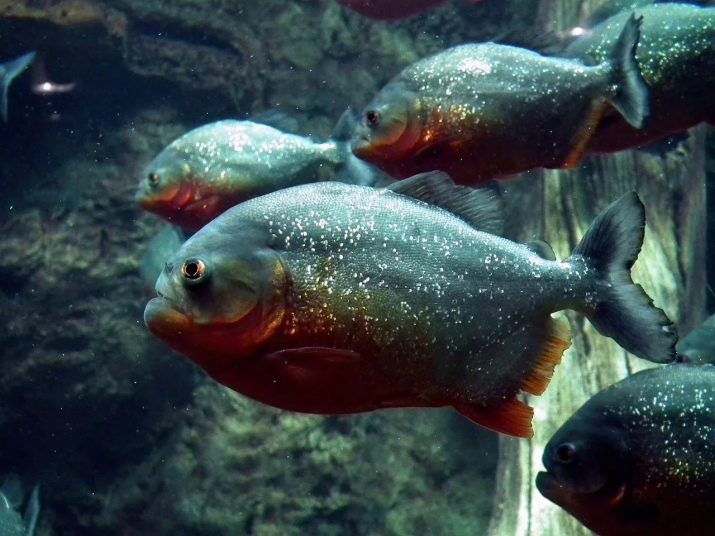
Krenitsikhla cardiac
A predatory creature originally from Brazil. Likes to feast on small fish, tadpoles, lean beef, worms. Quite spiteful, requiring enough free space for movement (for two fish, a container with a volume of at least 400 liters is needed).
She is very fast, loves to hunt and frolic, because of which she can get injured by crashing into a decorative piece, so it is advisable to leave the aquarium space free.
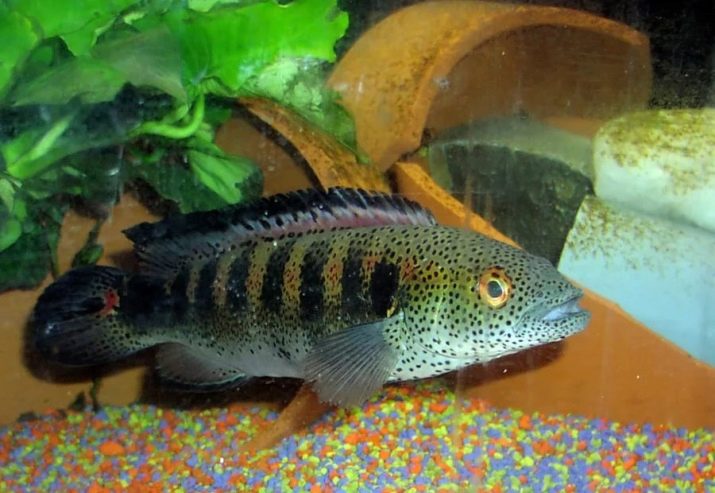
Common mecherot (Hudjet's pike)
Another water aggressor. Group content is recommended (5–8 pcs.), Because the mechretes prefer to hunt in pairs or with the whole flock. Outwardly, the fish resembles a bee-eater.
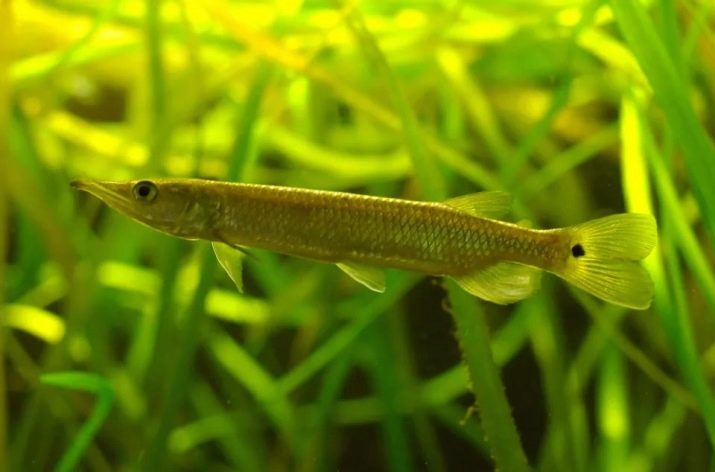
Spotted indian knife
A large and vicious fish, fighting even with its relatives. Very territorial. It is nocturnal, so it is recommended to feed in dim light. Prefers to eat tadpoles, fry, small fish. In captivity, the Indian knife has a length of up to 30 centimeters, it needs a large spacious aquarium (150-200 liters per individual).
It is advisable to decorate the bottom with snags and clay pots, where the predator will hide.
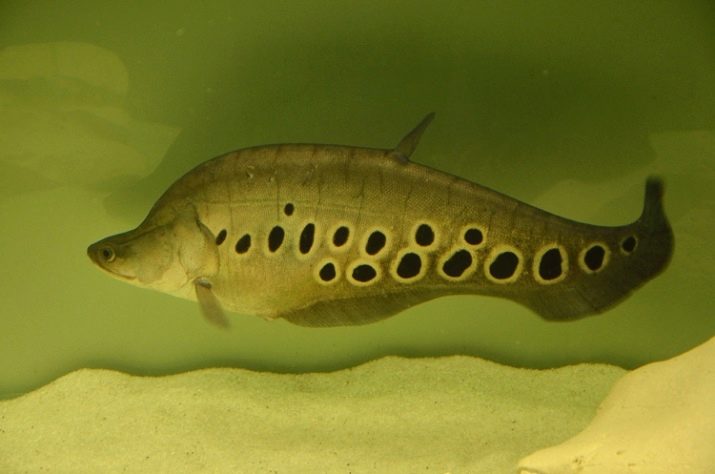
Sun perch
A very attractive representative among predator fish. Needs a spacious dwelling - the volume of the container must exceed 200-220 liters per individual. For good health, the perch must be properly and satisfyingly fed: earthworms, various larvae, squid meat and fish fillets.
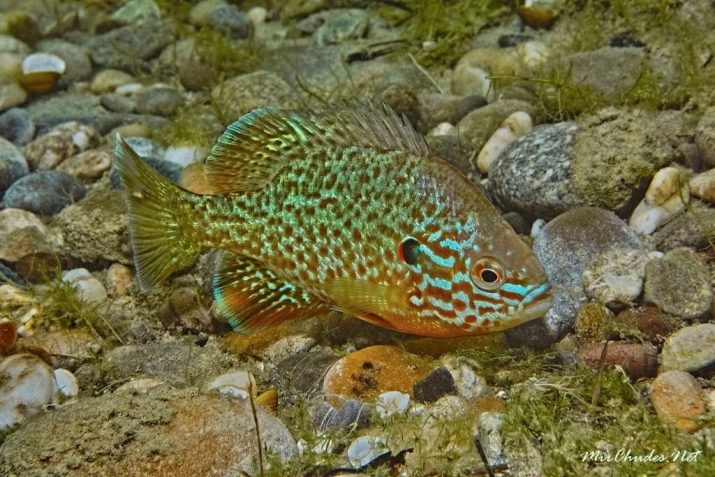
Baggill catfish
It grows in length up to 28-30 centimeters. For maintenance, a closed container with a capacity of 150-200 liters is required. They feed the catfish with small fish.
If you want to acquire such a pet, remember - it is poisonous, its bite can cause anaphylaxis in a person, therefore, precautions must be taken when cleaning the aquarium and feeding.
The amazing ability of the catfish is the ability to find it on land for some time, this is due to the presence of special bags inside its body, where the fish collects water "in reserve".
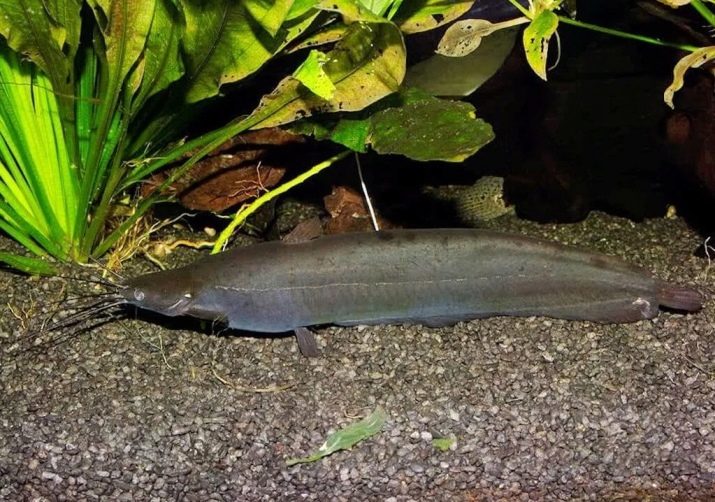
Dwarf tetradon, pygmy fish
Its name speaks for itself - the size of this predator is very small, only 2-3 cm! The main food of the tetradon is snails. The back of the fish is variegated, the abdomen is white. In general, the tetradon looks pretty harmless. It has a peculiar defense mechanism: when the danger approaches, it can swell, doubling at the same time.
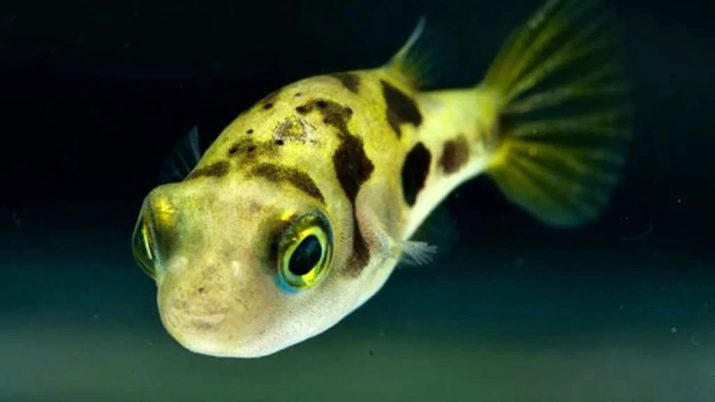
Cichlazoma eight-striped, "bee"
A predator from the cichlov family. Its size is quite large - 20–25 cm. Cavaliers, unlike women, sport a more catchy color, on their body there are very beautiful iridescent specks. Also, both representatives have vertical stripes on the sides. Cichlazoma prefers to feed on small fish, earthworms, bloodworms.
For its maintenance, a large capacity is needed, since the predator protects its territory and is very aggressive towards strangers.
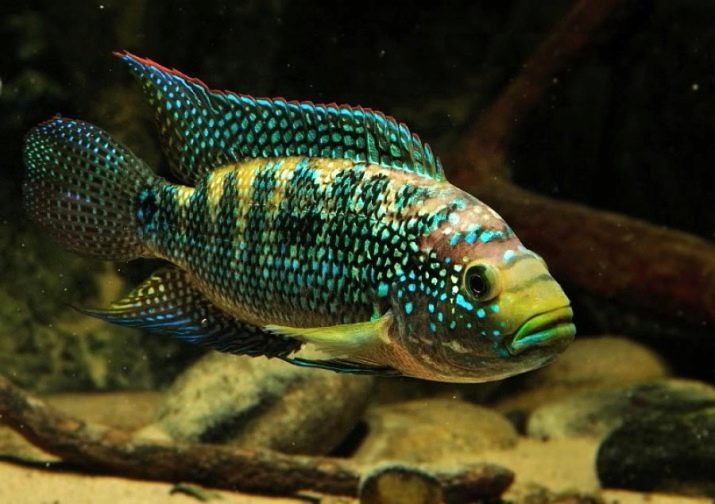
Longnose haplochromis (cichlid knife)
Small fish - about 13-15 cm in length, while loving space. It attacks curious “neighbors”, so a rather big aquarium is needed - 100–150 liters per representative. The main food is small freshwater fish, if desired, you can treat haplochromis with beef or chicken. It is not a 100% predator, as it also eats plants.
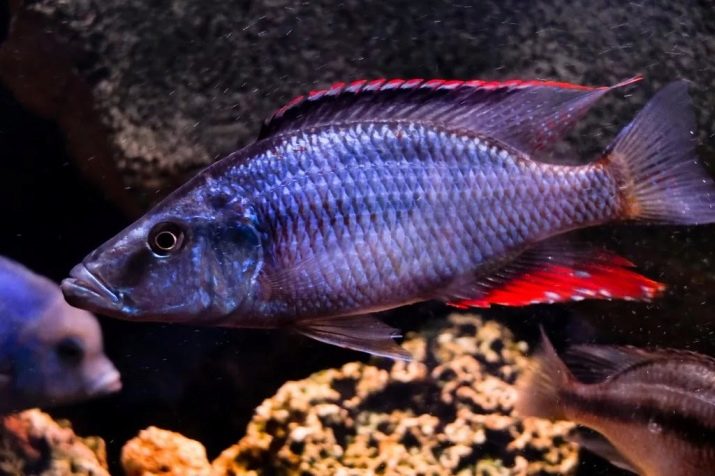
Shilb striped
Large fish (27–30 cm), hunts in a flock. The number of individuals should not be less than 6 pieces. A large capacity is needed for their residence - from 60 liters per one fish. This predator is an excellent hunter, loves to catch small fish, tadpoles, and also does not disdain fresh-frozen meat.
An aquarium with shims should be equipped with a powerful filter and water aerator. Use sand as a soil, put a large snag in the middle.
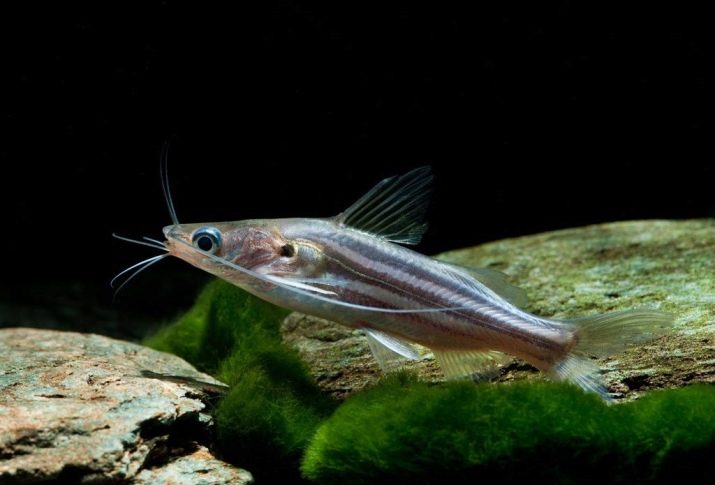
Compatibility
Along with the predators, the aquarium can contain either also "meat-eaters" or "vegetarians", but of a larger size, so that they do not become prey for aggressors. However, the best solution would be to keep the fish of one predatory species in a separate container.
You should not lodge carnivorous fish and small representatives of underwater fauna together, unless, of course, you want to witness their killing. And this will surely happen, since in predatory fish the hunting instinct is at the genetic level.
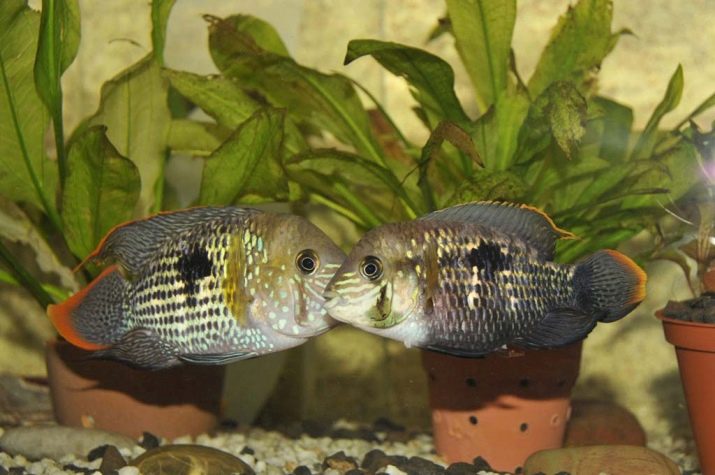
When populating your aquarium, it is worth remembering that the best neighbors are individuals of the same biological species. However, there is a catch here - some predators are aggressive towards their relatives, and it is better to settle them with non-aggressive large "vegetarians". Therefore, when choosing fish of a certain variety, familiarize yourself with their characteristics and take them into account when selecting "neighbors".
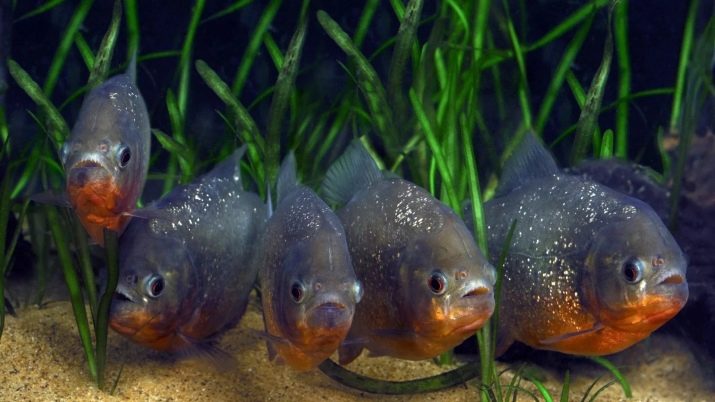
Growing conditions
Raising a predator fish is not an easy task. They are very whimsical to the quality and temperature of the water, they need sufficient territory for active pastime and hunting, as well as for spawning. The aquarium must be equipped with water filtration and aeration systems. The bottom landscape is also of great importance. Many predators like to hide, dig holes, so for them it is worth laying stones, snags, and clay shards on the bottom.
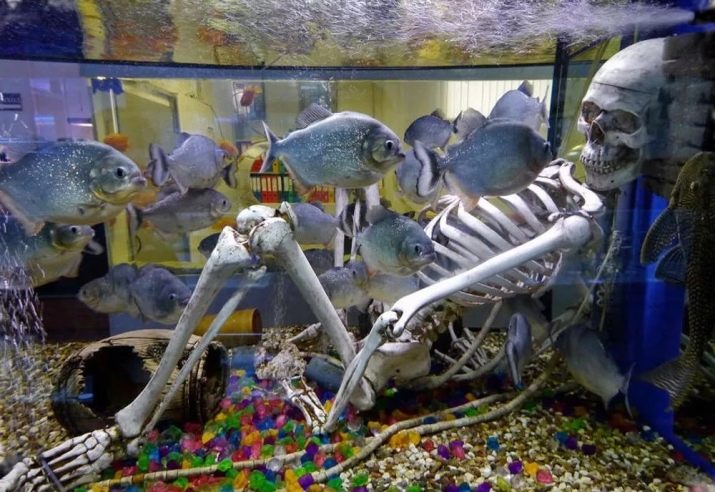
The location of the aquarium is also very important. Of course, it is worth studying the specific features of the selected species of fish before deciding where to put the container, but general recommendations are as follows: install it away from heat and noise sources in a well-lit place.
We talked a lot about the size of the aquarium. And they agreed that large sizes are needed for almost all types of predator fish. Because of their lifestyle, they need movement and begin to ache from lack of it. Maintaining a constant water temperature is also important. Predators cannot stand her drops, they may die.
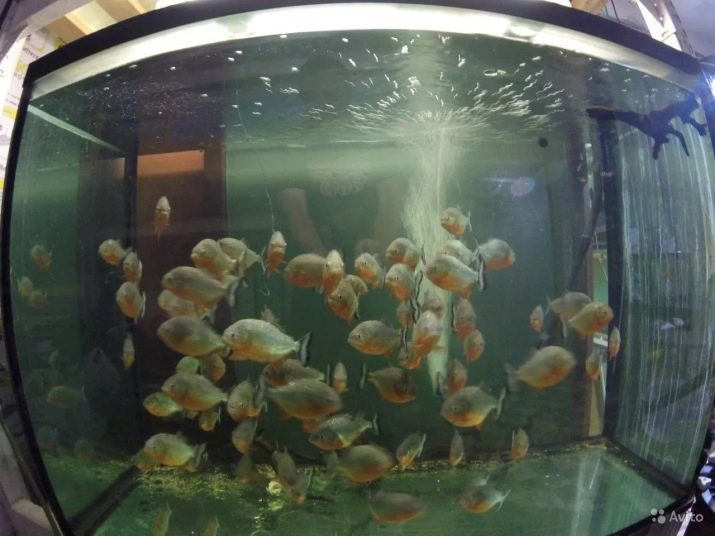
Feeding rules
As we already understood, the main food of predatory fish is meat, small fish, worms, bloodworms, mollusks. Naturally, they prefer the living over the dead. In the absence of adequate nutrition, predatory fish begin to "fight" with each other: eat fins, do not disdain cannibalism. Therefore, you need to develop an optimal feeding schedule for pets and adhere to it.
It is necessary to buy "victims", both living and dead, at specialized points of sale. Do not trust unfamiliar sellers or try to get food “on the street” (for example, dig up earthworms). This is fraught with infection of the inhabitants of the aquarium with pathogens (up to death).
Separately, it should be said about how, in fact, you need to feed the predators. Most of them have their own hunting tactics: some "sit" in ambush, others freeze like a statue in the middle of an aquarium waiting for prey, others chase and catch "victims". Observing your pets' behavior while hunting can become quite rewarding.
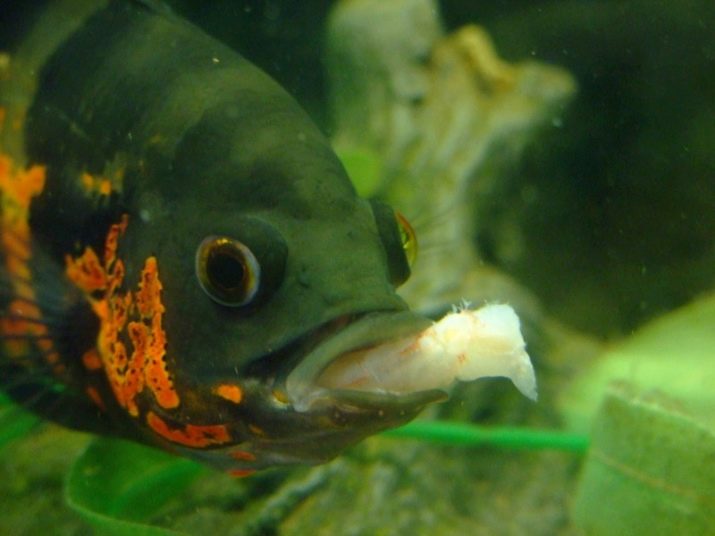
Remember to clean your aquarium in a timely manner. Pieces of food eaten - meat, fish, worms, etc. - begin to decompose, forming ammonia, which is harmful to fish. Therefore, the installation of a cleaning system and manual handling of the container is very important.


At the end, we will mention a little about the frequency of feeding of predatory fish. In the wild, most of them hunt almost without interruption. There is no need to overfeed them at home. Set a schedule - 3 to 5 times a day, in small portions. The fish will gradually get used to it. However, there are species that swallow large prey almost completely. They can eat only 3-5 times a week, refusing to feed.
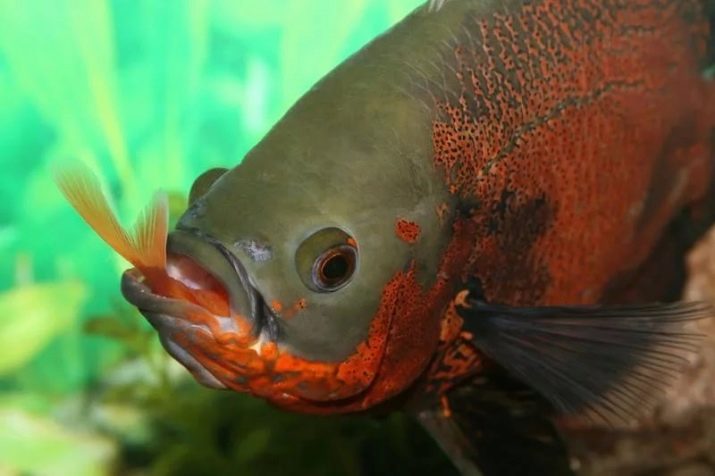
In the next video, you can watch the behavior of aggressive predatory aquarium fish.








